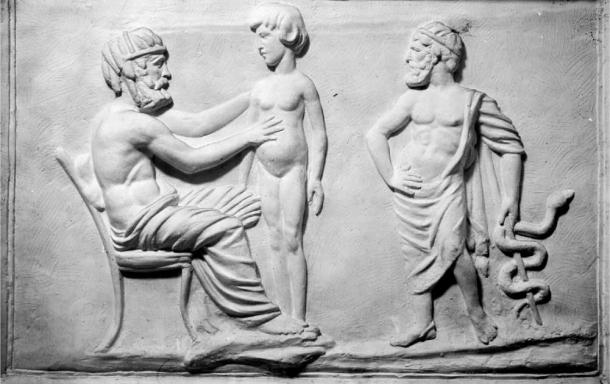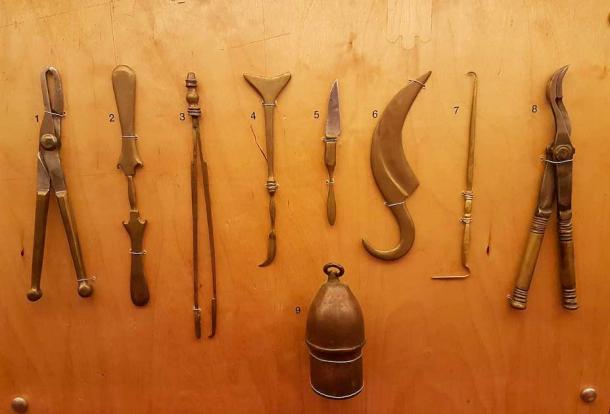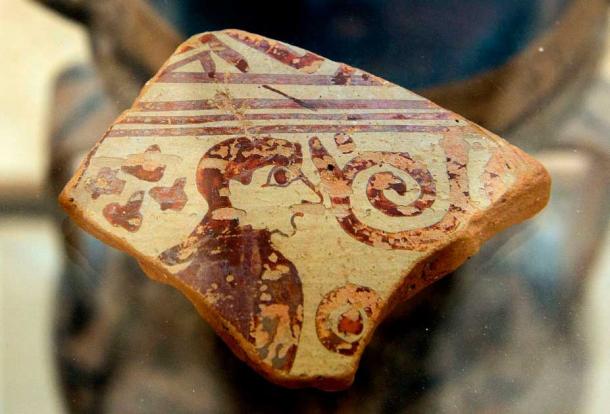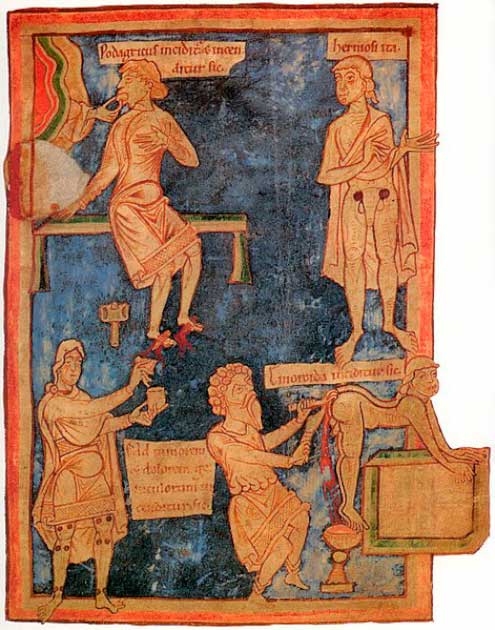
Hippocrates Did WHAT to Treat Hemorrhoids?
Did you know that more than half of all people will have to deal with hemorrhoids at least once in their life? Although hemorrhoids are an issue no one looks forward to dealing with, if you ever find yourself addressing that pesky condition, be VERY glad you are not living in ancient Greece with the famed Hippocrates (aka the “Father of Modern Medicine”) as your physician.
The famed doctor traveled widely and even may have written many of his thoughts and practices down (although because many Greeks studied under him and wrote based on his teaching, it is likely there are multiple authors of the works usually referred to as the “Hippocratic Collection”). What he is by far most famous for is the still used “Hippocratic Oath” taken by modern physicians around the world to this day. What is ironic is that the oath states to “do no harm” - which is why it may be surprising to find out if you went to a Hippocratic doctor in ancient Greece they would treat your hemorrhoids by literally taking heated iron surgical instruments to your derriere!

Greek physician and patient, plaster cast in W.H.M.M. (Wellcome Collection/ CC BY 4.0)
Hippocrates’ Procedure to Treat Hemorrhoids
The specific words of the 400 BC treatise “On Hemorrhoids” go into great detail on exactly how to best accomplish this procedure. It states that “seven or eight” iron surgical tools with a coin sized piece on the end should be “prepared” - meaning made red hot. Then the patient should be held down with arms restrained while the hemorrhoids are literally “burned until the pile is dried up, so that no part may be left behind”. Interestingly, the work specifically encouraged the patient not to be gagged and be encouraged to yell, because yelling will “push the anus out” and make it easier to access and burn off more hemorrhoids!
- 9 Ancient Physicians and Legendary Healers that Changed Medicine Forever
- Archaeologists Found a Medieval Body With a Tumor That Was Growing Teeth – But That’s Not the Whole Story

Surgical tools, 5th century BC, Greece. Reconstruction based on descriptions within the Hippocratic corpus. Thessaloniki Technology Museum. (Gts-tg/CC BY-SA 4.0)
When the procedure was finished there at least were processes in place to treat the (possibly now quite more severe) wounds in the person’s backside. After the operation a classic soothing paste was applied, made from the medicinal staples (?) lentils and chickpeas, and a bandage was tied to the person’s midriff to hold it in place for several days. After the lentil-chickpea bandage was removed, honey would be applied to a new bandage, and inserted into the person’s anus.
Now how the person was relieving themselves during that week, or how they could possibly do it with any semblance of hygiene… is best not to think about. Especially when you consider the fact that ancient Greeks tended to use actual shards of pottery in lieu of toilet paper after going “#2”. I can think of few worse things than having to literally scrape feces off of recent burn wounds… but I guess these ancient Greeks were a different breed. Sadly, that habit of using pottery shards as tp is a major reason why hemorrhoids were so common amongst ancient Greeks.

Ancient Greek pottery of Cycladic workshop, find from cemetery north of Paroikia, shard with painting, 700 – 600 BC. Archaeological museum of Paros. Zde/CC BY-SA 4.0
Other Ancient Hemorrhoid Cures
This “burn them straight to hell!” technique seems to be contained to the Greeks, although other potential solutions (essentially ALL preferable) were also written about by both the Hippocratic authors and other ancient societies. For example, ancient Egyptians had several recipes for medicinal pastes that could be applied to the affected areas.
- Ancient Greek Physician Hippocrates and the Medical Revolution
- The Many Ways Cancer Was Treated in the Ancient World
Interestingly, a different strategy used by Romans, Indians, and Arabs involved “ligation”. Ligation, or literally cutting off blood flow to an area, was utilized by each of these cultures and also pops up in some of the Hippocratic writings. The Greeks wrote about using wool or thread to tightly tie off the hemorrhoid, cutting off the blood flow to it so over time it would actually shrivel up and fall off either on its own or through “excision” – cutting it off. This technique has actually stood the test of time and it is one of several methods still used, although now doctors use a rubber band instead of some version of thread to tie off the hemorrhoid.

11th century English miniature. On the right is an operation to remove hemorrhoids. On the left a patient with gout is treated with cutting and burning of the feet. (Public Domain)
Hemorrhoid Burning Aside, Hippocrates Made Some Positive Contributions to Today’s Health Care
Of all possible solutions, the Hippocratic red hot iron burning is absolutely the worst. However, Hippocrates did give the world a whole new way of looking at health and even such terms as symptom, diagnosis, therapy, trauma, and sepsis. He is credited as the first to accurately diagnose epilepsy and figure out that it was caused by an issue within the brain, and therefore it proved that the brain did in fact control the body.
He also named a host of diseases we continue to call by the same terms today, such as cancer, diabetes, arthritis, coma, and paralysis. He even figured out how to diagnose and treat a lung infection known as empyema, a potentially fatal condition that would require a CT scan and X-ray for diagnosis today.
Given Hippocrates' host of remarkable accomplishments across multiple medical disciplines before the invention of nearly all modern diagnostic tools, perhaps we can give him a break for making the wrong call on one particular condition. Also considering it is always best to look on the brighter side of things, and considering almost everyone will deal with hemorrhoids at some point in their life… when it happens, you can at least be extra glad you are facing it with modern medicine at your side!
Top Image: 13th century depiction of hemorrhoid surgery. Source: The British Library / Public Domain
By Brendan Beatty
References
Smith, Wesley D. 2020. "Hippocrates". Encyclopedia Britannica. Available at: https://www.britannica.com/biography/Hippocrates
Muitjens, Glyn 2019. “A Pain in the Backside: Ancient Remedies for Hemorrhoids.” Available at: https://recipes.hypotheses.org/14858
Johns Hopkins Staff, 2022. “Hemorrhoids.” Available at: https://www.hopkinsmedicine.org/health/conditions-and-diseases/hemorrhoids
Commonplace Facts Staff Writer, 2021. “Hippocrates Horrifying Method for Dealing with Hemorrhoids.” Available at: https://commonplacefacts.com/2021/10/22/hippocrates-horrifying-method-for-dealing-with-one-of-lifes-embarrassments/
Kleisiaris, Christos F et al. “Health care practices in ancient Greece: The Hippocratic ideal.” Journal of medical ethics and history of medicine vol. 7 6. 15 Mar. 2014 Available at: https://www.ncbi.nlm.nih.gov/pmc/articles/PMC4263393/
Adhikari, S 2019. “Top 12 Contributions of Hippocrates.” Available at: https://www.ancienthistorylists.com/people/top-contributions-hippocrates/















